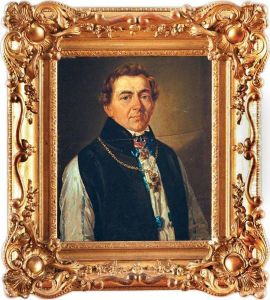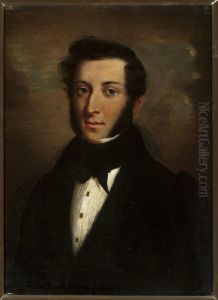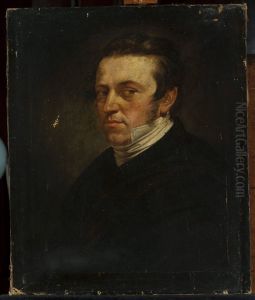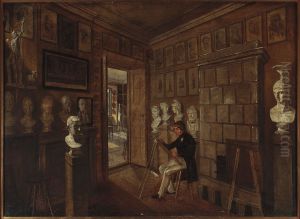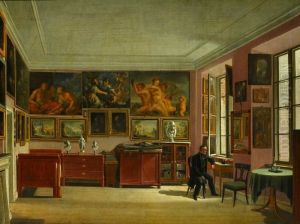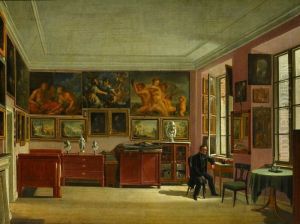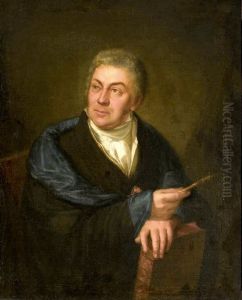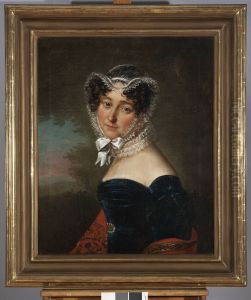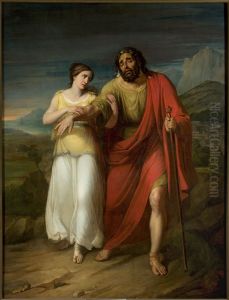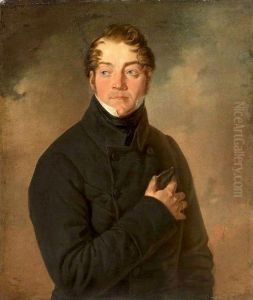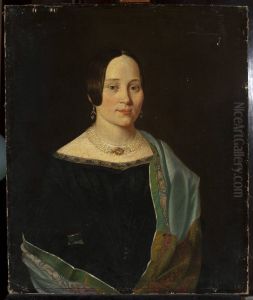Aleksander Kokular Paintings
Aleksander Kokular was a Polish painter, born in 1793 in Warsaw, which at the time was part of the Polish-Lithuanian Commonwealth. His life spanned a period of significant political upheaval, as Poland experienced partitions by neighboring powers and lost its sovereignty for over a century. Despite the turbulent times, Kokular managed to establish himself as a notable artist in the realm of Polish art.
Kokular received his initial artistic training in Warsaw, but his skills and ambitions led him to further his education abroad. He is known to have studied in Paris, which was a major center for the arts in Europe. There, he would have been exposed to the works of contemporary masters and the rich tradition of European painting. Kokular primarily focused on portraits and genre scenes, capturing the likeness and spirit of his subjects with a keen eye for detail and a strong command of technique.
Returning to Warsaw, Kokular became a respected member of the artistic community. He participated in the intellectual and cultural life of the city and contributed to the development of fine arts in Poland. His works reflected both the academic standards of the time and a personal touch that distinguished his portraits and genre scenes. He often depicted the middle class and nobility, providing a visual record of the era's societal figures.
Kokular's work is characterized by its careful composition, realistic representation, and subtle use of color. While not as widely recognized internationally as some of his contemporaries, he played a significant role in the culture of his homeland. His portraits not only captured the appearance of his subjects but also aimed to reveal their character and social status.
Tragically, Aleksander Kokular's life was cut short when he died in 1846 at the age of 53. His contributions to Polish art were significant, and his works are now housed in various museums and collections in Poland, serving as a testament to his skill and dedication to the portrayal of Polish society during a complex historical period.
